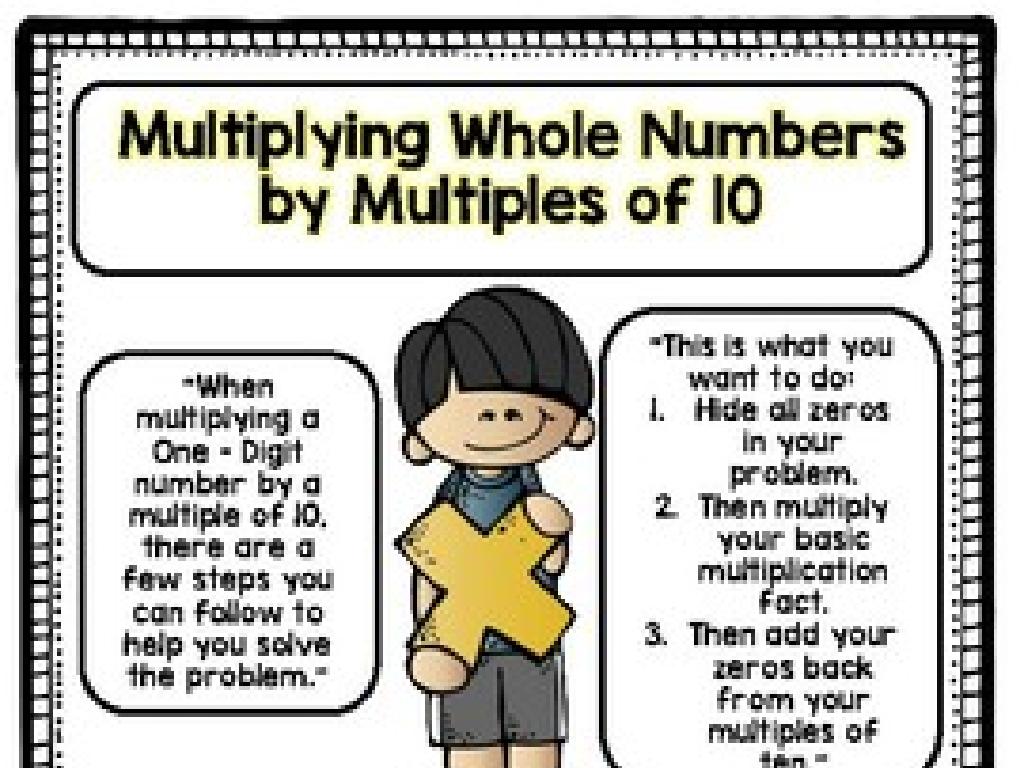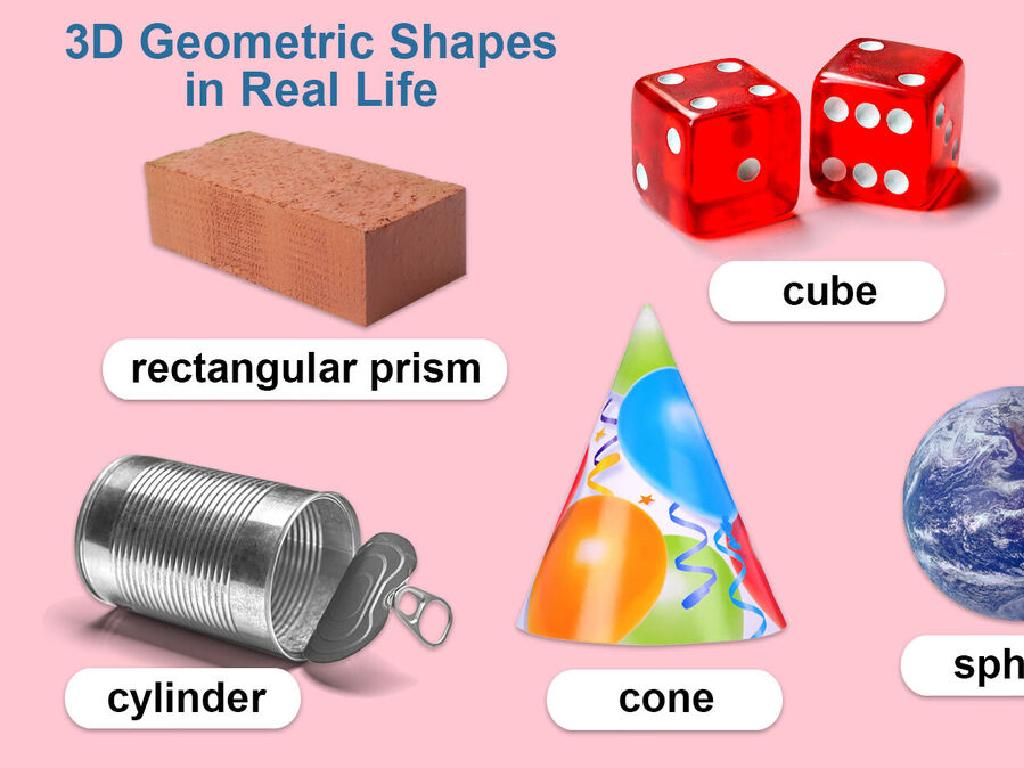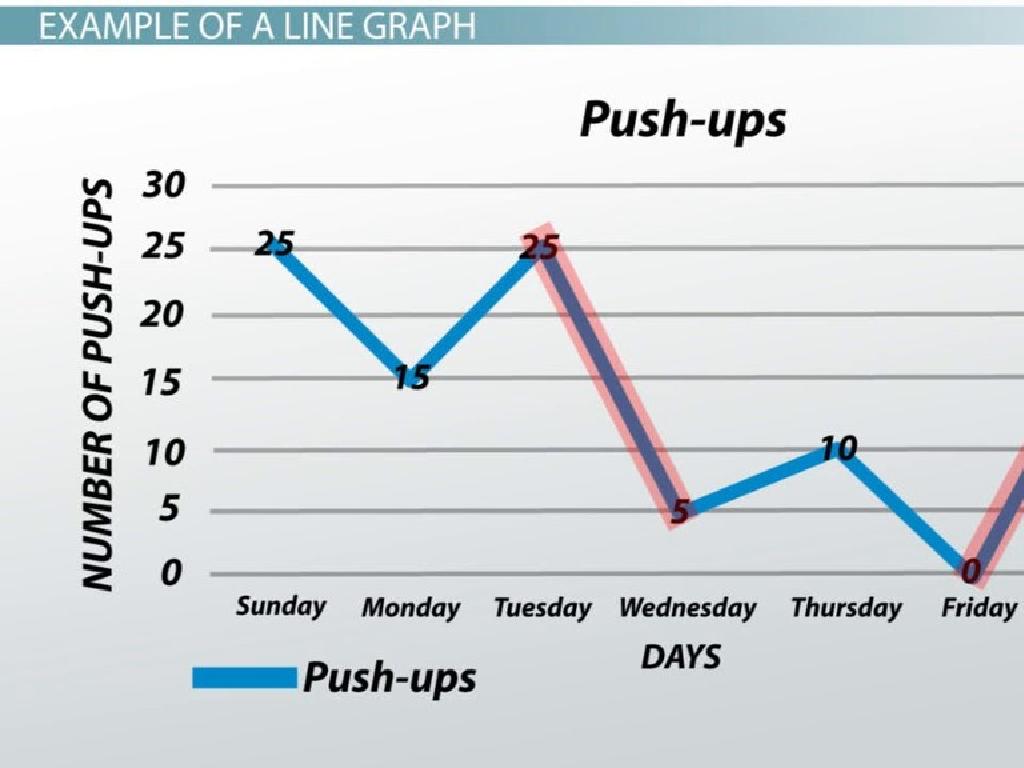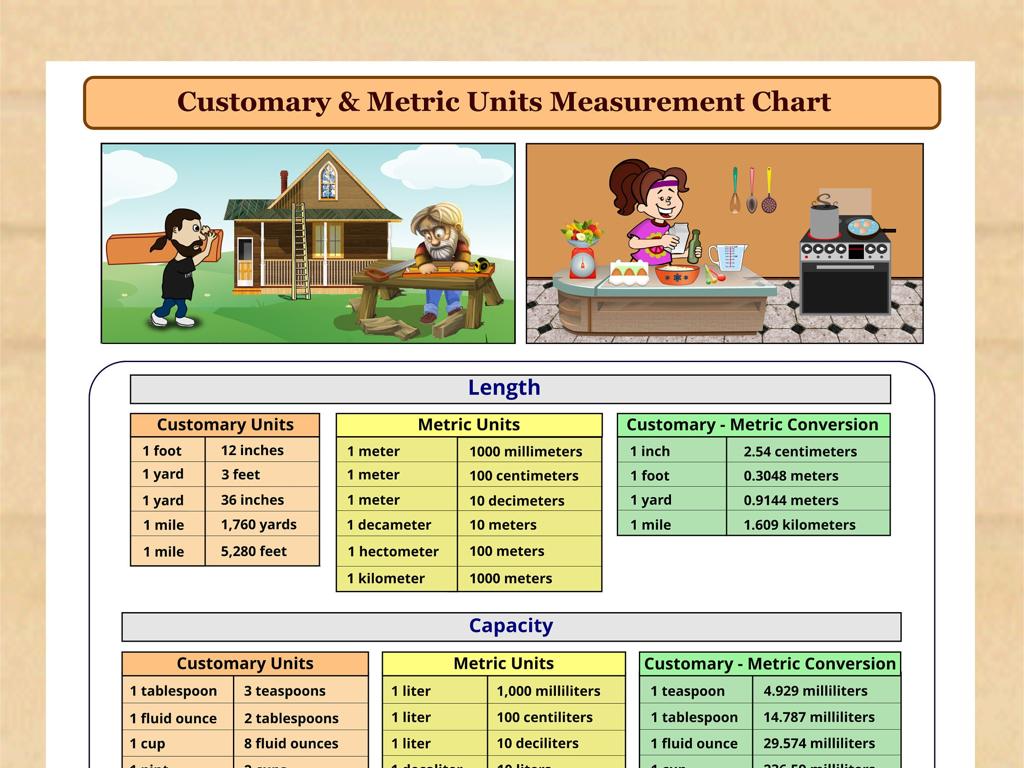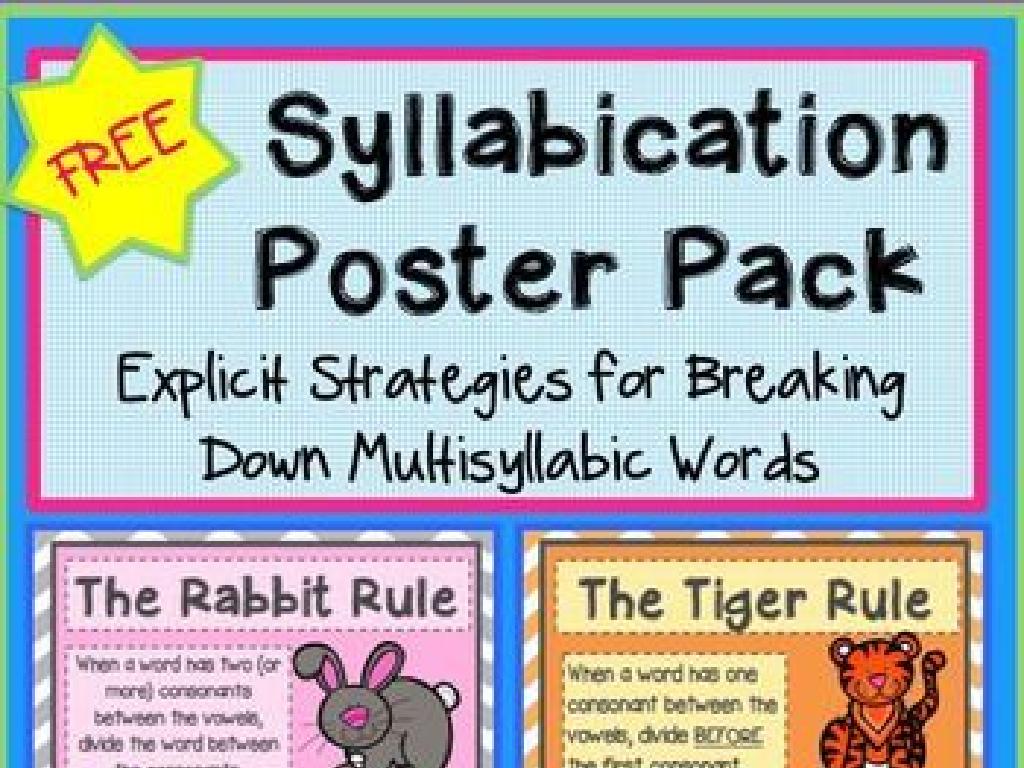Heating, Cooling, And Changes Of State: Vaporizing And Condensing
Subject: Science
Grade: First grade
Topic: Changes Of State
Please LOG IN to download the presentation. Access is available to registered users only.
View More Content
Exploring Heat and Cold in Science!
– Learning about changes with heat
– Heat can make things melt or evaporate
– Discover what happens when things cool
– Cold can make things freeze or condense
– Think about melting ice cream
– Ice cream melts and becomes liquid
– Changes are all around us
|
This slide introduces the concept of how heat and cold can cause things to change state. Start by explaining that when things get hot, they can melt like ice cream in the sun, or even turn into a gas by evaporating. When things get cold, they can freeze like water into ice, or turn from a gas into a liquid by condensing. Use the example of melting ice cream to make it relatable for first graders. Encourage the students to think of other examples of things that change when they get hot or cold. The goal is to spark curiosity about everyday changes they observe.
Exploring Heat: Making Things Warm
– What does heating do?
– Heating makes things warm, like when we feel the sun.
– Changes from heating
– When we heat things, they can turn from solid to liquid or liquid to gas.
– Heating up water
– We’ll see how water changes when it gets hot.
– Observing water’s change
|
This slide introduces the concept of heating and its effects on materials, specifically water. Start by explaining that heating is the process of making something warm, which can cause it to change its state. Use relatable examples like warming hands by a fire or the sun heating the ground. Demonstrate how heating water can make it change from liquid to gas (steam). This can be shown with a simple classroom experiment using a kettle or a pot of water (with teacher supervision). Explain that the heat gives energy to the water molecules, making them move faster until they turn into steam. Encourage students to think of other examples where they have seen heating change something, like melting ice into water.
Cooling and Water
– What does cooling mean?
– Making things cold
– Changes from cooling
– Things can change state when cooled
– Cooling down water
– Think about water in a freezer
– Guess the changes!
|
This slide introduces the concept of cooling and its effects on the state of matter, specifically water. Begin by explaining that cooling means making something less warm or cold. Discuss how temperature can affect the state of objects, using water as a relatable example. Ask the students what they think happens to water when it gets cold, prompting them to think about their experiences with ice. Explain that when water cools down, it can turn into ice. This will set the stage for understanding the changes of state from liquid to solid and lead into a discussion or demonstration of freezing water to observe the change.
From Liquid to Gas: Vaporizing
– Water heats up and turns to steam
– Like when water boils and disappears
– Steam is water as a gas
– Just like invisible air around us
– Can we see steam?
– Observing steam in an experiment
– We’ll do a fun activity to see steam!
|
This slide introduces the concept of vaporization to first graders. Begin by explaining that when water gets very hot, it changes from a liquid to a gas, which we call steam. Use simple language to describe steam as another form of water that’s like the air, which we can’t always see. Engage the students with a question about whether steam is visible, setting up for a class experiment. For the activity, you can boil water in a kettle to show steam formation. Explain safety precautions around hot water and steam. Other activities could include observing condensation on a cold surface near steam or watching water evaporate from a warm surface. These visual aids will help solidify the concept of vaporization.
Changing States: Gas to Liquid
– Steam cools into water
– Condensing makes water
– When gas cools, it changes back to liquid, like steam to water.
– Mirror fog after shower
– Like the foggy mirror in the bathroom from the steam of a hot shower.
– Draw condensing examples
– Think of when you see water droplets appear on cold things.
|
This slide is aimed at helping first graders understand the concept of condensation as part of the changes of state. Begin by explaining that when steam or vapor cools down, it changes back into water, which is called condensing. Use the example of a foggy mirror after a hot shower to illustrate this process in a relatable way. Encourage the students to draw pictures of other situations where they might see condensation, such as water droplets on the outside of a cold glass or on grass in the early morning. This activity will help solidify their understanding by connecting the concept to real-world observations.
Let’s Experiment with Water!
– Fun experiment with water
– We’ll use hot and cold water to learn about temperature changes.
– Observe heating and cooling
– Watch water change as it gets hot and then cools down again.
– Safety with hot water
– Always be cautious with hot water to avoid burns.
|
This slide introduces a hands-on activity for students to understand the concepts of heating, cooling, and changes of state. The experiment will involve heating water to see it vaporize and then cooling it to observe condensation. Emphasize the importance of safety, especially when handling hot water. Teachers should prepare different stations with adult supervision for the heating part of the experiment. For cooling, students can observe condensation by placing a cold surface above the warm water. Possible activities include watching steam rise from hot water, creating condensation on a cold spoon, and comparing room temperature water with heated water. This will help students visually grasp the concepts of vaporization and condensation in a controlled and safe environment.
Class Activity: Melting and Freezing
– Observe ice cubes in warm water
– Discuss what happens to the ice
– Ice melts turning into water
– Freeze water to see freezing
– Predict changes in water states
– What’s your guess about ice in warm water?
|
This class activity is designed to help first graders understand the concepts of melting and freezing through direct observation and participation. Begin by showing the students ice cubes and then placing them in warm water. Ask the students to watch closely and describe what they see as the ice begins to melt. After discussing their observations, move on to the freezing part of the experiment by putting water into the freezer. Ask the students to predict what will happen to the water after some time in the freezer. The goal is for students to understand that heat causes ice to melt (turn from solid to liquid), and cold causes water to freeze (turn from liquid to solid). Prepare four to five different activities for students to engage with these concepts hands-on, such as comparing melting rates in different water temperatures or using food coloring to track water as it freezes.
Review Time: Heating, Cooling, and States of Matter
– Recap: Heating and cooling effects
– When we heat things, they get warmer, and when we cool them, they get colder.
– Understanding vaporizing
– Vaporizing is when a liquid turns into a gas, like water turning into steam.
– Exploring condensing
– Condensing is when a gas turns back into a liquid, like steam turning into water droplets.
– Class discussion and questions
|
This slide is meant to review and reinforce the concepts of heating, cooling, and changes of state that were covered in today’s lesson. Start by asking the class what they remember about how heating and cooling can change things. Then, move on to the specific terms ‘vaporizing’ and ‘condensing.’ Give examples like boiling water for vaporizing and a cold glass collecting water droplets for condensing. Encourage the students to participate by asking them to explain these concepts in their own words or provide examples they’ve observed in everyday life. This interactive discussion will help solidify their understanding of the material.
Super Scientists: Understanding Changes of State
– Heating and cooling are amazing!
– Vaporizing turns liquid to gas
– Like water boiling to steam
– Condensing turns gas to liquid
– Like steam cooling to water
– Clap for yourselves, scientists!
|
This slide is a conclusion to the lesson on heating, cooling, and changes of state, specifically focusing on vaporizing and condensing. It’s a celebration of what the students have learned and an opportunity to reinforce their understanding. Vaporizing is when a liquid turns into a gas, which can be demonstrated by boiling water. Condensing is the opposite, where a gas turns back into a liquid, like steam on a mirror turning into water droplets. Encourage the students to give themselves a round of applause for their hard work and curiosity. This positive reinforcement helps build their confidence and excitement about science.
Fun Activity: Draw and Share!
– Draw vaporizing or condensing
– Share your drawing with the class
– Explain your drawing
– What is turning into gas or liquid in your picture?
– Discuss changes of state
|
This activity is designed to engage first-grade students in the concept of changes of state through a creative drawing exercise. Students will draw something they think represents vaporizing (like water boiling into steam) or condensing (like steam turning back into water). After drawing, each student will have the opportunity to share their artwork with the class and explain the process they’ve illustrated. This will help reinforce their understanding of the concepts in a fun and interactive way. As a teacher, prepare to guide the discussion by asking questions about their drawings and providing examples if needed. Possible activities could include drawing a pot of water boiling, breath on a cold day, or dew on grass.

